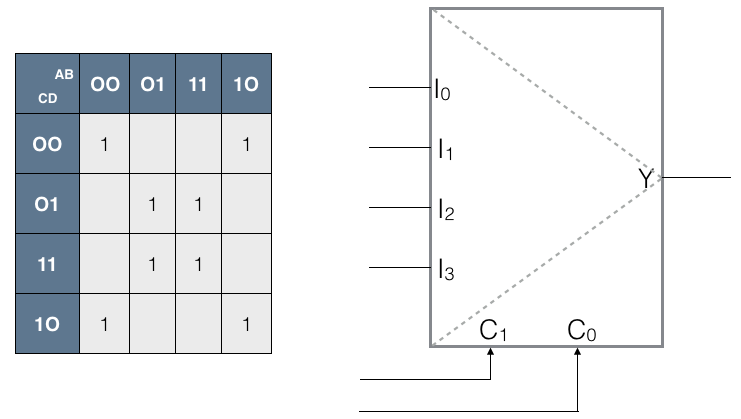Difference between revisions of "CSC270 Homework 4 2016"
(Created page with "--~~~~ ---- =Problem 1= <br /> * Using '''as few additional gates as possible''', implement the function ''f'' whose Karnaugh map is shown below, on the left, using th e multi...") |
(→Problem 1) |
||
| Line 3: | Line 3: | ||
=Problem 1= | =Problem 1= | ||
<br /> | <br /> | ||
| − | * Using '''as few additional gates as possible''', implement the function ''f'' whose Karnaugh map is shown below, on the left, using th e multiplexer shown on the right. | + | * Using '''as few additional gates as possible''', implement the function ''f(A, B, C, D)'' whose Karnaugh map is shown below, on the left, using th e multiplexer shown on the right. |
<br /> | <br /> | ||
[[Image:MuxExercise1.png|center|350px]] | [[Image:MuxExercise1.png|center|350px]] | ||
<br /> | <br /> | ||
| − | * Using '''as few additional gates as possible''', implement the function ''g'' whose Karnaugh map is shown below, on the left, using th e multiplexer shown on the right. | + | * Using '''as few additional gates as possible''', implement the function ''g(A, B, C, D)'' whose Karnaugh map is shown below, on the left, using th e multiplexer shown on the right. |
<br /> | <br /> | ||
[[Image:MuxExercise2.png|center|350px]] | [[Image:MuxExercise2.png|center|350px]] | ||
<br /> | <br /> | ||
Revision as of 10:51, 16 February 2016
--D. Thiebaut (talk) 10:50, 16 February 2016 (EST)
Problem 1
- Using as few additional gates as possible, implement the function f(A, B, C, D) whose Karnaugh map is shown below, on the left, using th e multiplexer shown on the right.
- Using as few additional gates as possible, implement the function g(A, B, C, D) whose Karnaugh map is shown below, on the left, using th e multiplexer shown on the right.

